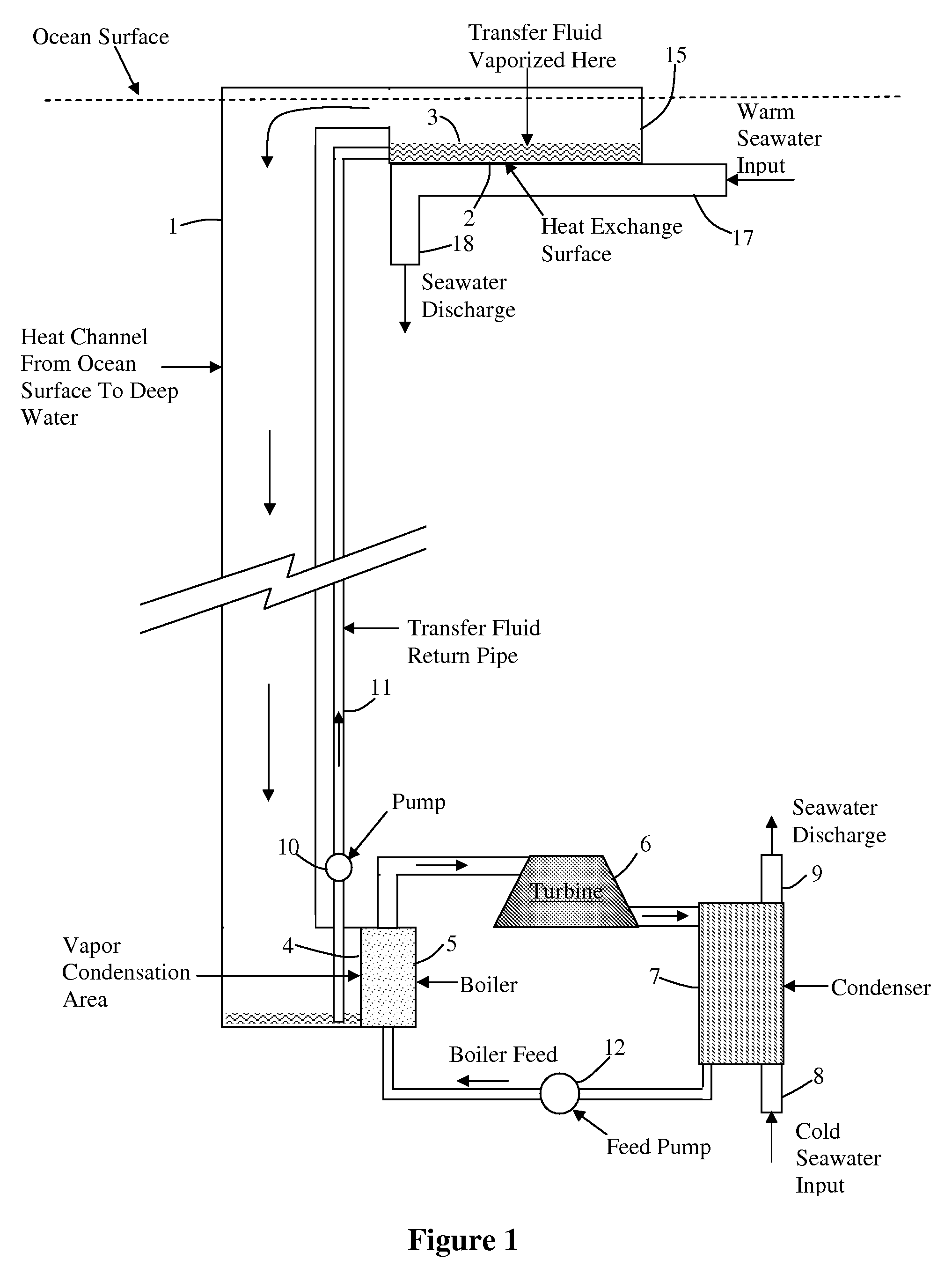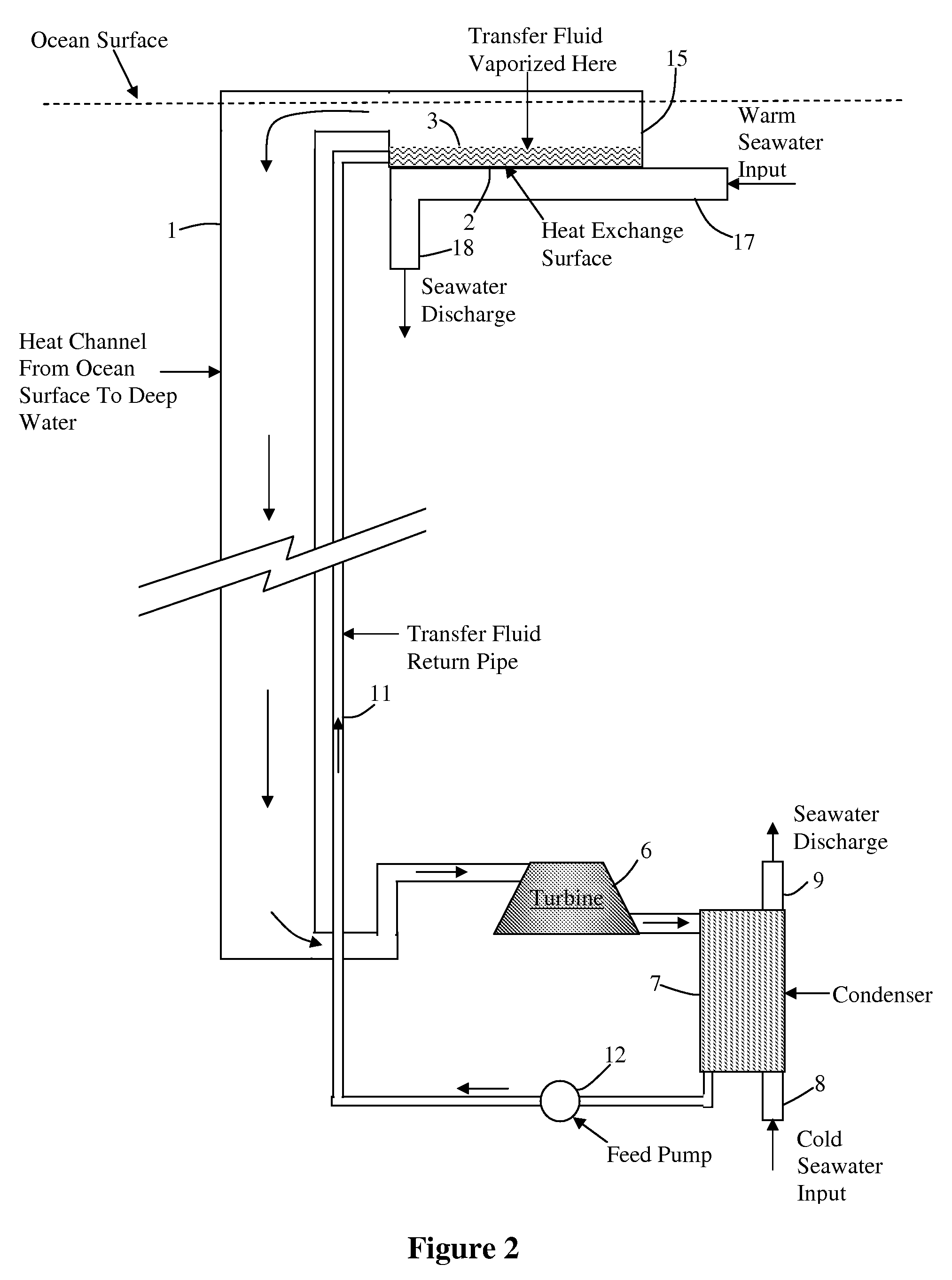Heat transfer for ocean thermal energy conversion
a technology of heat transfer and ocean thermal energy, applied in sea energy generation, machines/engines, mechanical equipment, etc., can solve the problems of large heat release, inability to have a wick, and inability to achieve heat dissipation
- Summary
- Abstract
- Description
- Claims
- Application Information
AI Technical Summary
Benefits of technology
Problems solved by technology
Method used
Image
Examples
Embodiment Construction
[0016]Let us first consider a design in which the turbines, generators, and heat exchangers are at 1,000-meter depth. (Later we will look at the design which has the turbine and generator at the surface). FIG. 1 gives a schematic presentation of the design. At the ocean surface, warm seawater entering pipe 17 is pumped through a heat exchanger or simply moved across a heat exchange surface 2 on the bottom of an evaporation tank 15 that transfers heat into a heat transfer liquid 3 that evaporates and carries the latent heat of evaporation down the heat channel 1 to a depth of 1,000-meters. It should be understood that the heat transfer can be done with a heat exchanger that has many heat transfer surfaces. The drawing of FIG. 1 presents the concept with a single surface for simplicity.
[0017]At the bottom, the vapor condenses on a heat exchange surface 4 (or in a heat exchanger) and transfers heat into a working fluid in a boiler 5, and the working fluid drives a turbine 6 to produce ...
PUM
 Login to View More
Login to View More Abstract
Description
Claims
Application Information
 Login to View More
Login to View More - R&D
- Intellectual Property
- Life Sciences
- Materials
- Tech Scout
- Unparalleled Data Quality
- Higher Quality Content
- 60% Fewer Hallucinations
Browse by: Latest US Patents, China's latest patents, Technical Efficacy Thesaurus, Application Domain, Technology Topic, Popular Technical Reports.
© 2025 PatSnap. All rights reserved.Legal|Privacy policy|Modern Slavery Act Transparency Statement|Sitemap|About US| Contact US: help@patsnap.com



